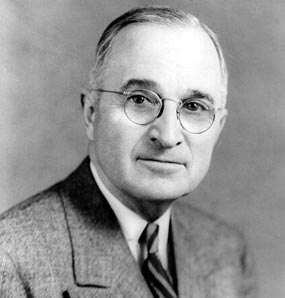The Reconstruction of Europe
The Western Allies, committed to the protection of democratic states from the perceived threat of Communist invasion (see the section on the Cold War and European integration), began to establish a set of international organizations so that national governments could work together to resolve common problems on issues ranging from defense and security to improving trade in order to rebuild European nations physically and economically shattered by the Second World War.
Because so much had been destroyed during the war, many European countries were heavily in debt to the United States and could not afford to rebuild. There were shortages of food and raw materials; thousands of refugees were still homeless. Due to these difficulties, there was a severe shortage of jobs and unemployment was high. In these circumstances, the weakness of governments led to increased support for Communism. This was the case with Greece where a civil war was being fought. There was a fear that the Soviet Union would use the weakness of Western European states like Greece, to help Communist revolutionaries to overthrow democratic governments.
The Truman Doctrine and European Unity
In response to the Communist threat to Greece, and the near economic collapse in Turkey, the President of the United States, Harry Truman, announced a plan to strengthen and support all free states that were threatened by communist revolution. This was known as the Truman Doctrine and it was announced on March 12, 1947.
In June 1947, General George C. Marshall, the Secretary of State announced a plan to give massive amounts of aid to war torn countries for reconstruction, and buy materials and food. The Marshall Plan, as it became known, closely involved the states that received aid. In cooperation with the American government, the Organization for European Economic Co-operation (OEEC) was created to distribute American aid money.
The OEEC allocated American aid to the various member countries. These countries had to agree where the money was going to be distributed. In 1949, the American government began advocating economic integration between the OEEC countries and promised to give additional aid if the OEEC countries began to remove trade restrictions between themselves. Americans wanted free trade not only so that it was easier for American companies to do business with each but also to speed up the process of economic recovery and stabilize Western Europe.
To ensure collective security for Western Europe from possible Soviet aggression, the Western nations established the North Atlantic Treaty Organization or NATO | FR, on April 4, 1949. Led by the United States, the treaty stipulated that if any member of NATO was attacked, the other members were obligated to enter the conflict.
Click here to learn about Europe in the Cold War.
